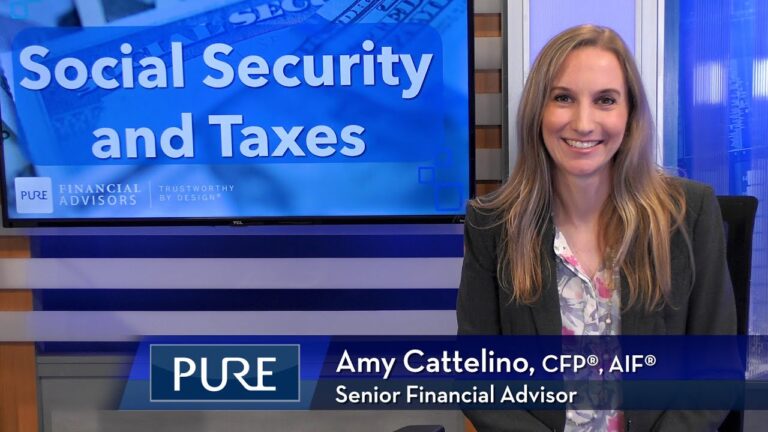There are three parts to Medicare that you are required to enroll in, and a fourth that is optional but most people enroll in. Pure Senior Financial Planner, Nathaniel Ritchison, CFP®, AIF® will give a brief overview of the costs and benefits of the different Medicare plans.
FREE GUIDE | Medicare Checkup Guide
Transcript
Medicare Plans: Costs and Coverages
Age definitely has some benefits, especially when it comes to our topic today, Medicare. Today we’ll be discussing the costs and benefits of the different Medicare Plans.
There are three parts to Medicare that you are required to enroll in, and a fourth that is optional, but most people enroll in. The parts of Medicare are easy enough to remember, as they are Part A, B, C and D. Parts A, B & D are required, while Part C is optional.
Medicare Part A covers inpatient hospital stays, care in a skilled nursing facility, hospice care, and some home health care.
Medicare Part B covers certain doctors’ services, outpatient care, medical supplies, and preventive services.
Medicare Part D helps cover the cost of prescription drugs including many recommended shots or vaccines.
Medicare Part C as mentioned, is optional. Sometimes referred to as a supplemental coverage Part C is thought of as a choice between an HMO and a PPO coverage, like when you enroll for health insurance while working. You might think of Medicare Advantage plans under part C as having coverage similar to an HMO, while Medigap coverage is most similar to a PPO.
Ok, so now that we know the four parts of Medicare, let’s turn to giving you an overview of the costs and benefits.
Medicare Part A is usually free for most people after they are eligible. Eligibility is turning 65 or having a long-term disability and having worked for 10 years. If you or your spouse doesn’t qualify based on the 10-year work requirement then you’ll pay a premium of $274 (if you’re single) or $499 (as a couple) per month. The benefits of Part A allow for no copayment for the first 60 days in a hospital, after your deductible of $1,556 has been reached. For stays between 61and 150 days, you pay a pre-negotiated rate, while stays over 150 days are not covered. There are also benefits for skilled nursing care for up to 100 days, and home health care and hospice. Part A is intended to get you into the hospital for acute and some short-term rehabilitation, and back out within a relatively short period of time.
Medicare Part B carries a premium of at least $170.10 per month for 2022 and will go higher as your income increases. This coverage generally covers outpatient and preventative care, things like doctor visits. You have a deductible of $233 before your co-insurance coverage of 20% begins. There are many routine services that are covered at no cost like certain lab services, home health care costs, mental health, etc. But generally, any services that aren’t covered for free will be subject to that 20% co-insurance costs.
Medicare Part D is prescription drug coverage and your last required part. These plans can vary wildly depending on the type of drugs you are taking and whether you’re taking generic or formularies, and where you live.
Medicare Part C otherwise known as Medicare Advantage or Medigap coverage is varied but generally speaking the higher your benefits, the higher your monthly premiums will be. Medicare Advantage or Medigap, allows you to customize your coverage and costs so that it fits with your specific needs. I recommend visiting the Medicare.gov website to search for plans in your area.
In planning for retirement, it’s important that you include the known costs of health care, like your Medicare premiums and out of pocket expenses, within your retirement cash flow plan. But it doesn’t end there, a well-planned retirement should also include a longer-term plan to spend more on health-related expenses throughout your life as these expenses can become one of the largest draws on your financial resources.
Subscribe to our YouTube channel.
IMPORTANT DISCLOSURES:
• Investment Advisory and Financial Planning Services are offered through Pure Financial Advisors, LLC, a Registered Investment Advisor.
• Pure Financial Advisors LLC does not offer tax or legal advice. Consult with your tax advisor or attorney regarding specific situations.
• Opinions expressed are subject to change without notice and are not intended as investment advice or to predict future performance.
• Investing involves risk including the potential loss of principal. No investment strategy can guarantee a profit or protect against loss in periods of declining values.
• All information is believed to be from reliable sources; however, we make no representation as to its completeness or accuracy.
• Intended for educational purposes only and are not intended as individualized advice or a guarantee that you will achieve a desired result. Before implementing any strategies discussed you should consult your tax and financial advisors.
CFP® – The CERTIFIED FINANCIAL PLANNER™ certification is by the Certified Financial Planner Board of Standards, Inc. To attain the right to use the CFP® designation, an individual must satisfactorily fulfill education, experience and ethics requirements as well as pass a comprehensive exam. Thirty hours of continuing education is required every two years to maintain the designation.
AIF® – Accredited Investment Fiduciary designation is administered by the Center for Fiduciary Studies fi360. To receive the AIF Designation, an individual must meet prerequisite criteria, complete a training program, and pass a comprehensive examination. Six hours of continuing education is required annually to maintain the designation.












